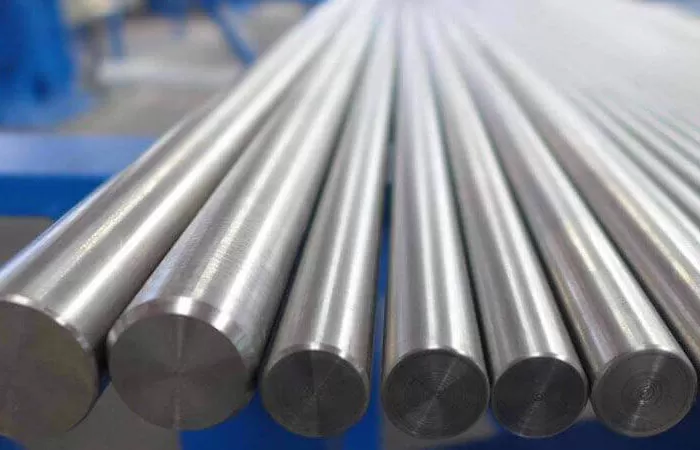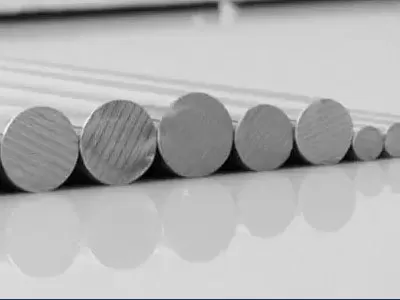
In the world of engineering materials, few names are as enduring and widely recognized as Inconel 718. Developed in the late 1950s, this nickel-chromium alloy has since become one of the cornerstones of high-performance engineering, particularly in environments where both mechanical strength and resistance to extreme conditions are indispensable. Its legacy begins with the needs of aerospace and continues through energy, automotive, and chemical industries, each finding unique ways to exploit its combination of properties. To appreciate why this material has remained so significant for over half a century, one must understand not only its chemical structure but also the engineering challenges it was designed to overcome.
Inconel 718 is distinguished by its precipitation-hardening mechanism. Unlike simpler alloys that rely solely on solid-solution strengthening, Inconel 718 develops remarkable strength through the controlled formation of intermetallic phases, most notably the gamma prime (γ′) and gamma double prime (γ″) precipitates. This metallurgical design enables the alloy to retain tensile strength and creep resistance at temperatures up to around 650°C, while also maintaining good fabricability. In practice, this means engineers can forge, machine, and weld components from Inconel 718 without encountering the brittleness or cracking that often plague other high-strength materials. It is this delicate balance between manufacturability and performance that has allowed the alloy to see such widespread adoption.
Perhaps the most iconic use of Inconel 718 is in aerospace propulsion. Jet engines represent one of the harshest operational environments for any material: blades, discs, and fasteners are subjected to cycles of rapid heating and cooling, exposure to oxidizing gases, and immense rotational stresses. Inconel 718 found its niche here because it could not only endure the heat but also resist fatigue and stress corrosion cracking, which are catastrophic failure modes in rotating machinery. The alloy quickly became a material of choice for compressor and turbine components. Its presence in aircraft engines helped extend the lifespan of parts, reduced maintenance intervals, and contributed directly to the reliability of commercial aviation during the jet age.
The energy sector provides another compelling narrative. Inconel 718 is widely used in both gas turbines for power generation and in components exposed to high-pressure, high-temperature steam. Unlike conventional steels that lose their mechanical integrity when exposed to heat over time, Inconel 718 retains stable microstructure even after thousands of hours of operation. This resistance to thermal fatigue is crucial for continuous power plants, where downtime translates directly into economic losses. In nuclear energy, the alloy is valued not only for heat resistance but also for its ability to withstand radiation damage and the corrosive effects of pressurized water. By prolonging component life in such reactors, Inconel 718 contributes indirectly to safer and more cost-effective electricity generation.
In oil and gas exploration, the alloy once again proves its versatility. Deep-sea drilling and sour gas extraction environments expose metals to hydrogen sulfide, chlorides, and other corrosive agents that can initiate cracking or pitting. Inconel 718 has been employed in critical downhole equipment such as tubing hangers, valves, and fasteners. The material’s resistance to sulfide stress cracking has made it a reliable choice for maintaining structural integrity in wells that reach thousands of meters below the surface. In such contexts, the failure of a single fastener could compromise the entire drilling operation, making the reliability of Inconel 718 a matter not only of efficiency but of environmental safety as well.
Automotive applications may not seem as extreme as aerospace or oil drilling, but high-performance vehicles and motorsport racing also rely on the alloy. Turbocharger rotors and exhaust systems operate under sustained heat and pressure that would quickly degrade conventional steels. Here, Inconel 718 provides a crucial edge by maintaining dimensional stability and preventing oxidation, allowing engines to run hotter and more efficiently. In racing, this translates into marginal gains in power and durability that can decide competition outcomes. In luxury or high-end sports cars, it contributes to reliability and performance expected by demanding customers.
Another interesting dimension of Inconel 718’s story lies in its machinability compared to other superalloys. While it is far from easy to cut and shape, engineers often describe it as relatively more forgiving than alloys like Inconel 625 or Hastelloy C-series. This is largely due to its slower precipitation kinetics, which delays hardening during thermal processing. For industries that require large-scale production of complex geometries, this relative ease of fabrication lowers costs and broadens applicability. For instance, the rise of additive manufacturing has opened new avenues for Inconel 718. Powder-bed fusion and directed energy deposition techniques now allow engineers to produce intricate aerospace brackets, heat exchangers, and turbine components with reduced material waste, and Inconel 718 has quickly emerged as one of the most widely printed superalloys in this field.
The alloy's properties also present challenges. It is heavier than alternatives such as titanium alloys, which limits its use in weight-sensitive applications where performance-to-mass ratios are critical. Furthermore, while its temperature capabilities are impressive, they are lower than certain newer nickel alloys developed for next-generation turbines that operate above 700°C. Engineers today often face a balancing act: should they prioritize the established reliability and manufacturability of Inconel 718, or pursue cutting-edge alloys that promise higher performance at the cost of greater complexity and expense? In many cases, Inconel 718 continues to win because of its proven track record, availability, and the depth of engineering experience surrounding it.
In medical applications, Inconel 718 plays a more subtle but nonetheless important role. It is not as biocompatible as titanium alloys, yet its strength and fatigue resistance make it suitable for specialized surgical instruments and equipment that must endure repeated sterilization cycles without degradation. In this niche, its value lies in reliability under repeated mechanical and thermal stress rather than in direct implantation. This once again highlights the alloy’s cross-disciplinary adaptability: wherever engineers face a combination of heat, pressure, and long-term performance demands, Inconel 718 can often provide a solution.
Looking to the future, Inconel 718 remains relevant in the context of sustainability and the shift toward renewable energy. As wind turbines grow larger and offshore installations move into harsher environments, materials are needed that can endure both mechanical fatigue from constant blade rotation and the corrosive marine atmosphere. While not always the first material of choice, Inconel 718 offers a benchmark of durability that designers consider when evaluating new alloys for such applications. Moreover, in hydrogen energy systems, where embrittlement can compromise conventional steels, nickel alloys like Inconel 718 are being studied for their ability to resist hydrogen-induced cracking, potentially opening another frontier of application.
The legacy of Inconel 718 is therefore not just historical but ongoing. Its story is one of adaptability, of being good enough in so many critical parameters that it outlives generations of alternatives. Even as newer alloys are designed with specialized properties, Inconel 718's balance of high-temperature strength, corrosion resistance, and processability keeps it indispensable. From the roar of jet engines to the quiet hum of power plants, from the seafloor to the racetrack, its presence is felt in countless technologies that define modern life. The enduring role of this alloy is not simply a matter of chemistry and metallurgy, but of trust accumulated through decades of service in the most demanding conditions human industry can create.

2025-11-19 14:09:22

2025-11-07 17:27:49

2025-11-05 15:44:44

25th floor, C3 Building, Wanda Plaza, Kaifu District, Changsha, Hunan Province, China